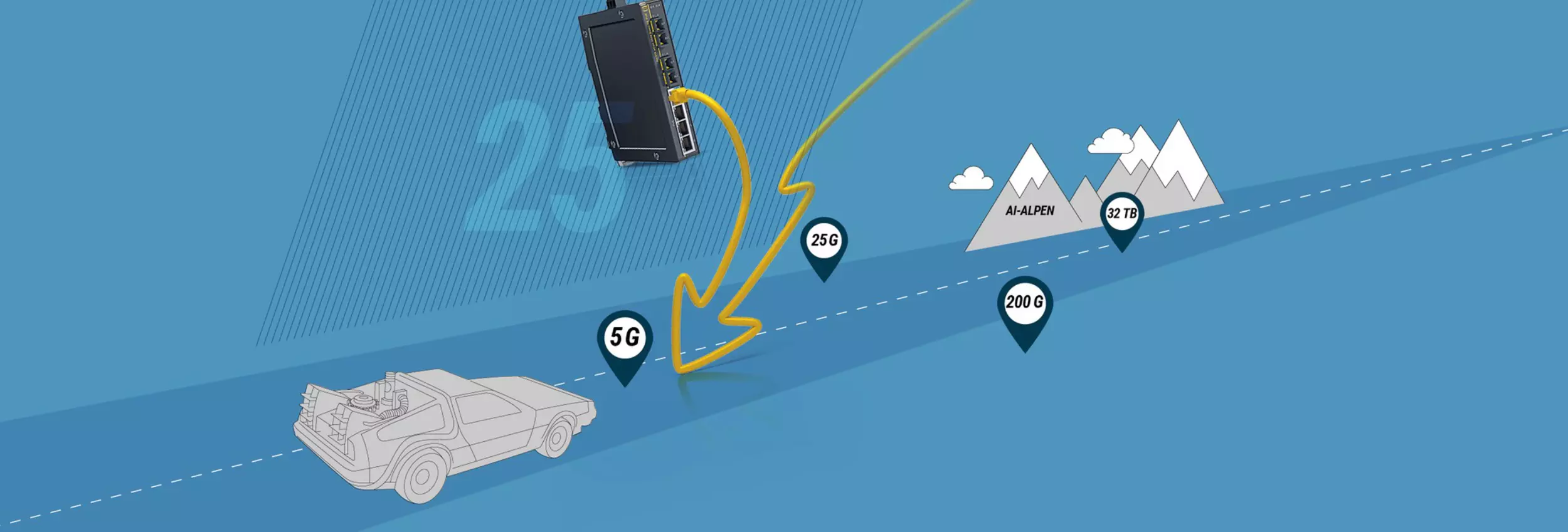Ethernet: 50 years old, but still the gold standard


Peter Jones
Position: Ethernet Alliance Chair
The fact that Ethernet is now more than 50 years old is just…wild. Yet, we're still building on that same foundation in 2025. One of the most resilient and versatile technologies in networking history started as a lab experiment that was first doodled out on a napkin. And it’s probably making sure this page loads for you right now.
These days, Ethernet is everywhere. It’s woven into just about everything — from smart cars to factory floors. So, what’s behind its staying power? Simple: it’s open, it scales without throwing a fit, and people keep finding new ways to improve it. Every year, it somehow gets a little cooler than before.
From Breakthrough to Backbone
Back in the early days, 10Mbps felt like a game changer. Now we’re routinely seeing 400G and 800G deployments, and the next leap to 1.6T is already underway. But the real story isn’t just about speed. It’s about Ethernet’s ability to evolve without losing its identity. Its rapid-fire rate of change, combined with a massive expansion in applications, means interoperability is mission-critical. However, Ethernet’s evolution has been shaped by more than just clever engineering. Rather, it comes from a shared commitment across the industry to interoperability and open standards – something the Ethernet Alliance continues to support through plugfests, testing programs, and industry collaboration.
Today’s Ethernet: the Hero the World Needs and Deserves
Ethernet’s origin story is one of adaptability. It has broken free of the boundaries of traditional IT environments and made itself at home on the plant floor, in our energy grids, on the edge of emerging AI workloads, and aboard planes, trains, and automobiles. Thanks to the arrival of Single-Pair Ethernet (SPE), Ethernet can easily trek across longer distances in industrial settings with less complicated wiring. Simultaneously, Power over Ethernet (PoE), which uses a single, integrated cable to power sensors, wireless access points, and security cameras, continues to expand. With more than a billion PoE ports shipped to date, it’s clear that Ethernet is as much about power as it is about packets.
Today, we’re far beyond the notion of just speeds and feeds. Optical Ethernet is a focus area as networks scale for AI workloads and high-speed edge applications. Optical links, once treated as passive plumbing, are now viewed as active components that require just as much attention to resilience, thermal management, and even cybersecurity as the digital side of the network.
The Road Ahead: Smarter, Faster, and More Resilient
Faster Ethernet is coming. The IEEE 802.3 Ethernet Working Group is leading the way, having realized major milestones, for example, the completion of 100G-per-lane standards and energetic discussions around 200G-per-lane signaling. Connector innovations like OSFP-XD are redefining density and efficiency in next-gen switch and router designs. But it’s not just about chasing speed. The Ethernet ecosystem is rethinking what “infrastructure” really means in an era of constant uptime and global connectivity. Physical-layer resilience is attracting a lot of attention, particularly for applications where downtime simply isn’t an option.
There’s also a strong push toward greater sustainability, with an eye to less power-hungry hardware and more power-conscious designs that can stand up to extreme conditions, smarter thermal management, and regionally diverse and secure supply chains. These aren’t merely buzzwords; they’re baked into how Ethernet gets designed and deployed.
For a better look at Ethernet’s future, be sure to check out our
Still the Gold Standard
Despite being around since the 1970s, Ethernet has yet to show its age. Like a chameleon, it keeps reinventing itself, flexing, scaling, and adapting to whatever comes next. No matter what the Next Big Thing is — from fully autonomous factories to fly-by-wire airplanes and beyond — Ethernet will be there to keep it all connected.
Count us in. Being part of Ethernet’s storied past and promising future is at the heart of the
If its first 50 years are any indication, Ethernet’s second act will be even better. Wait and see.
The



